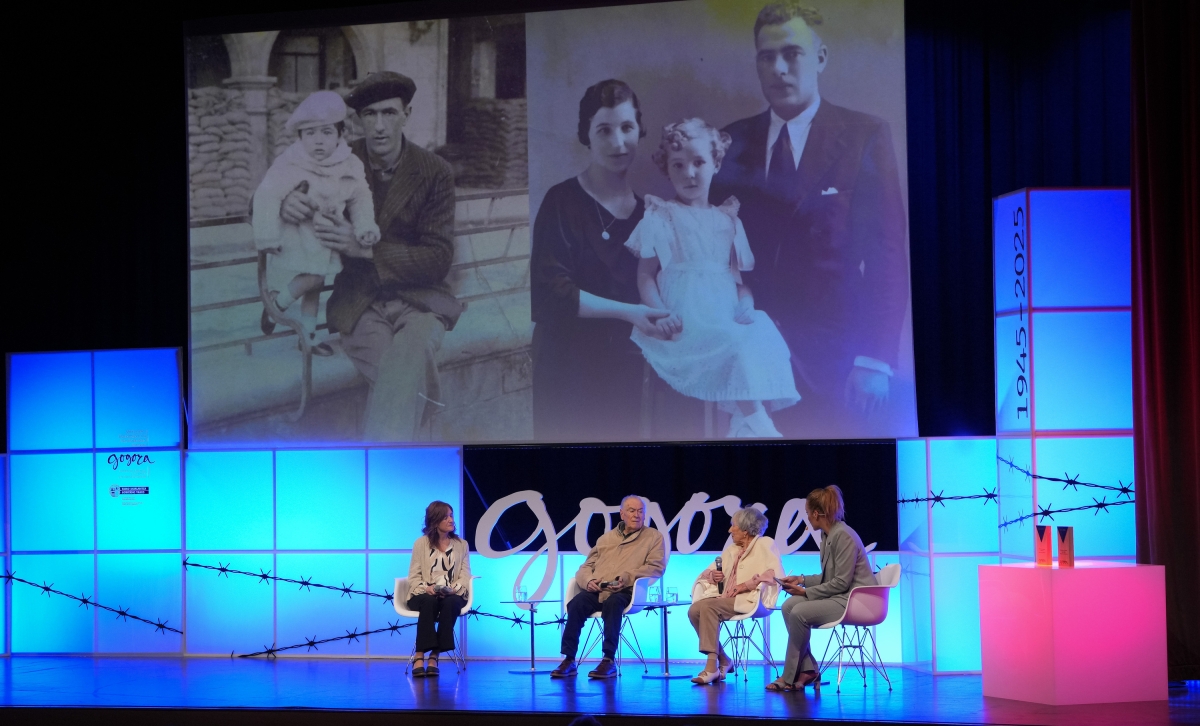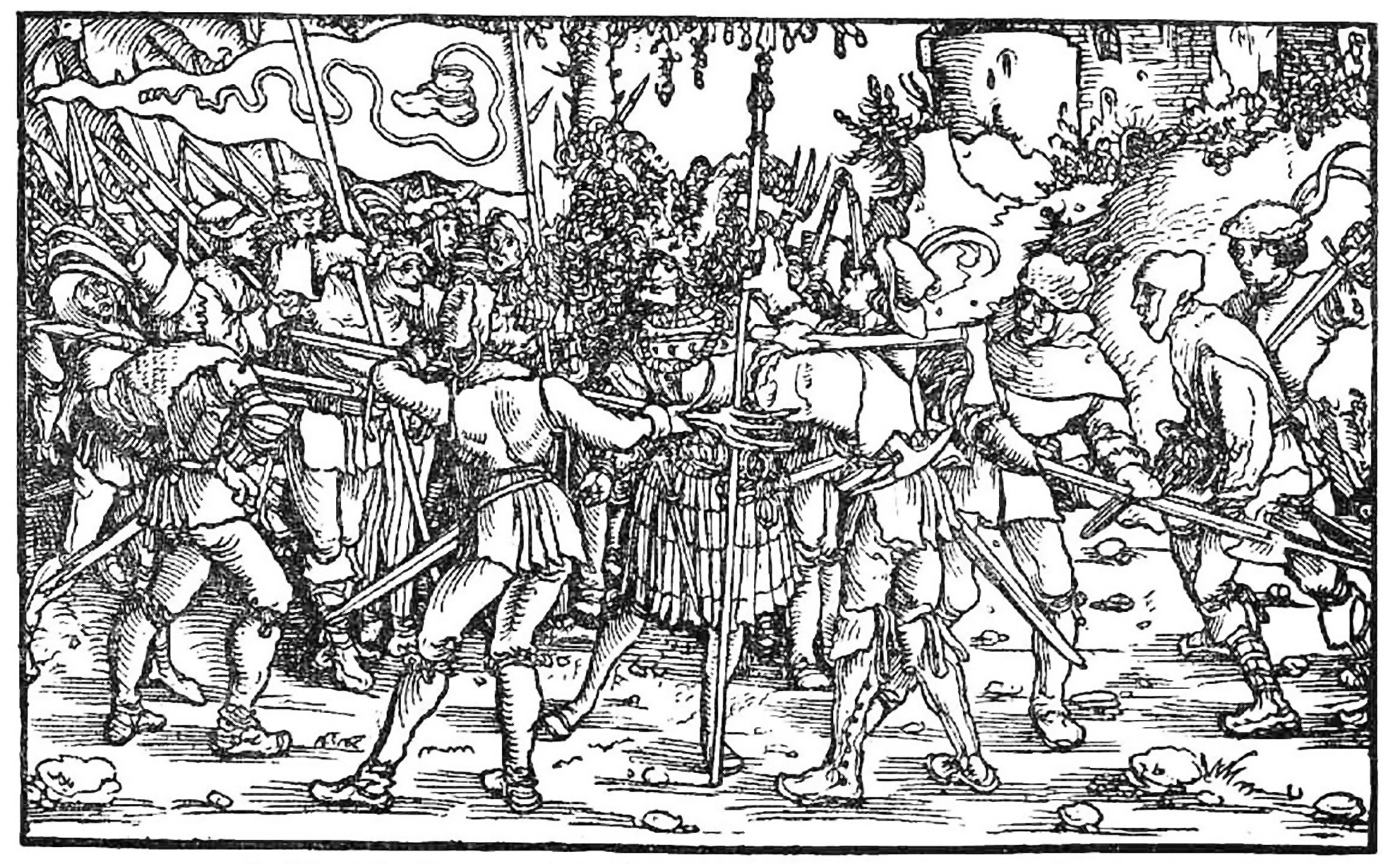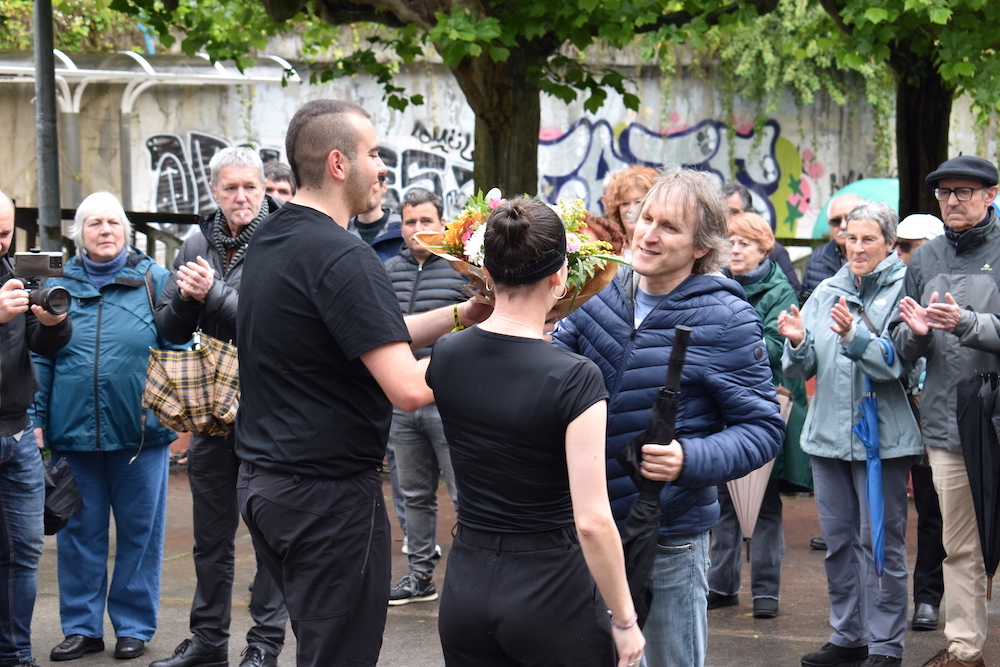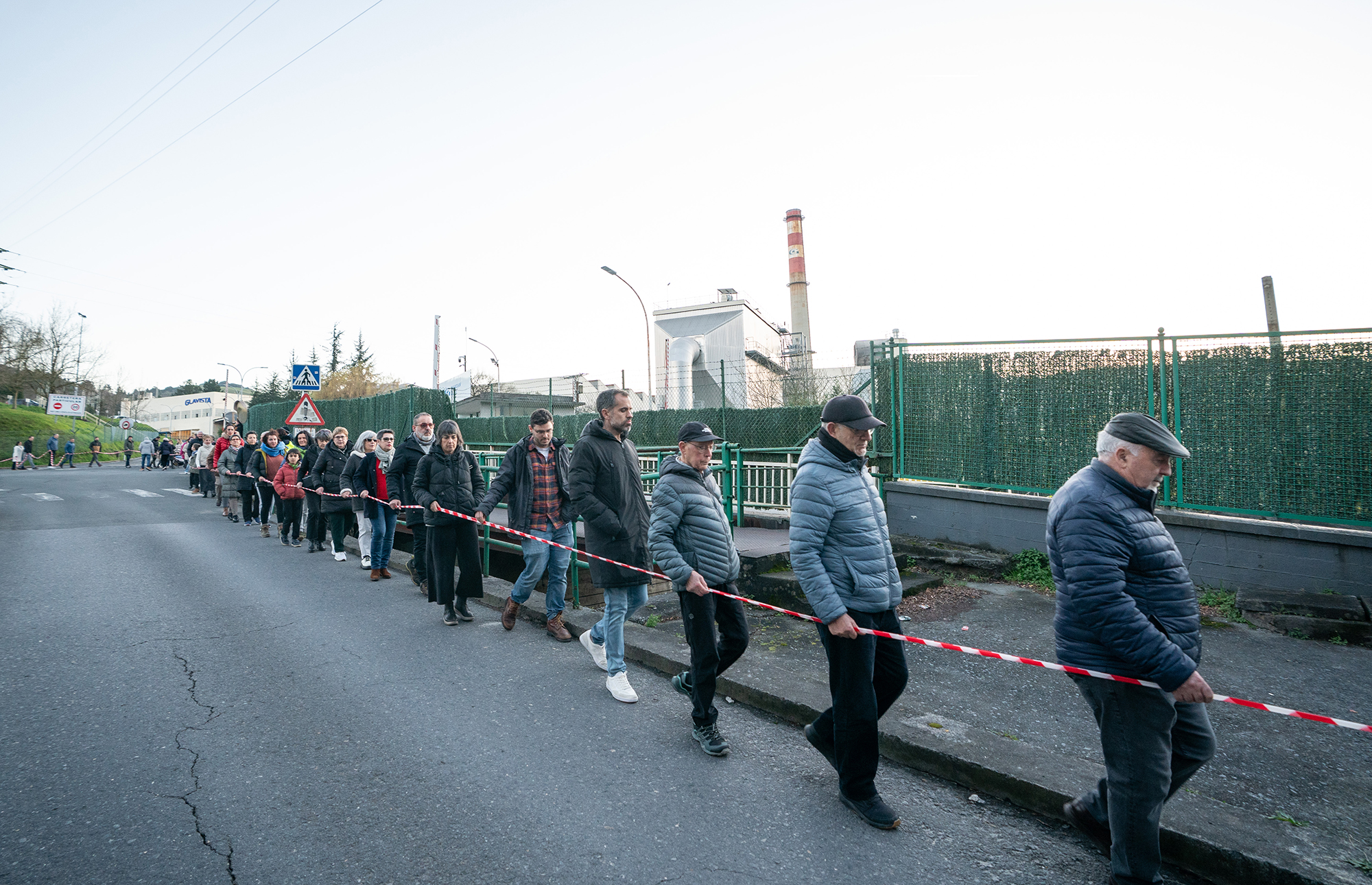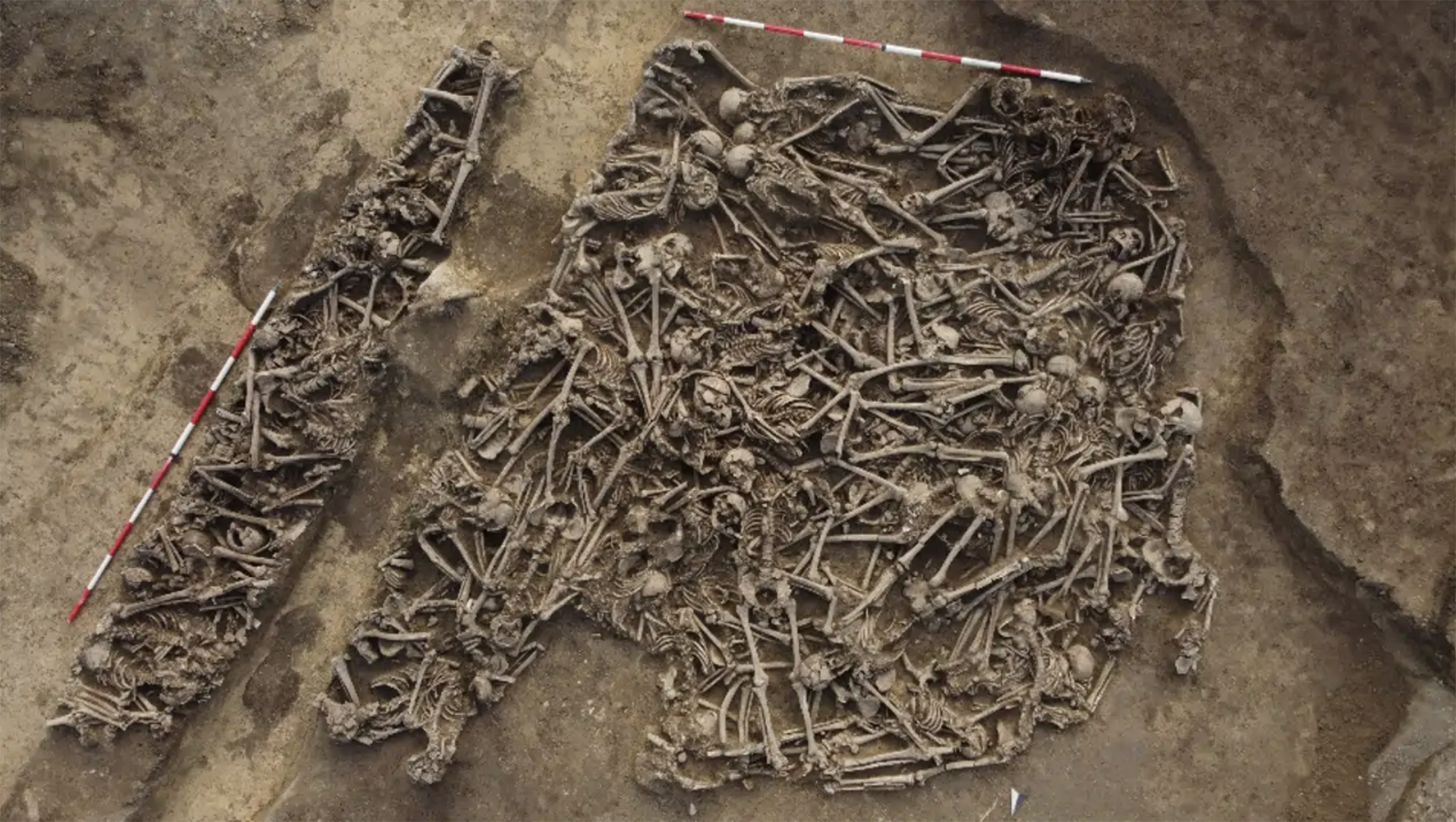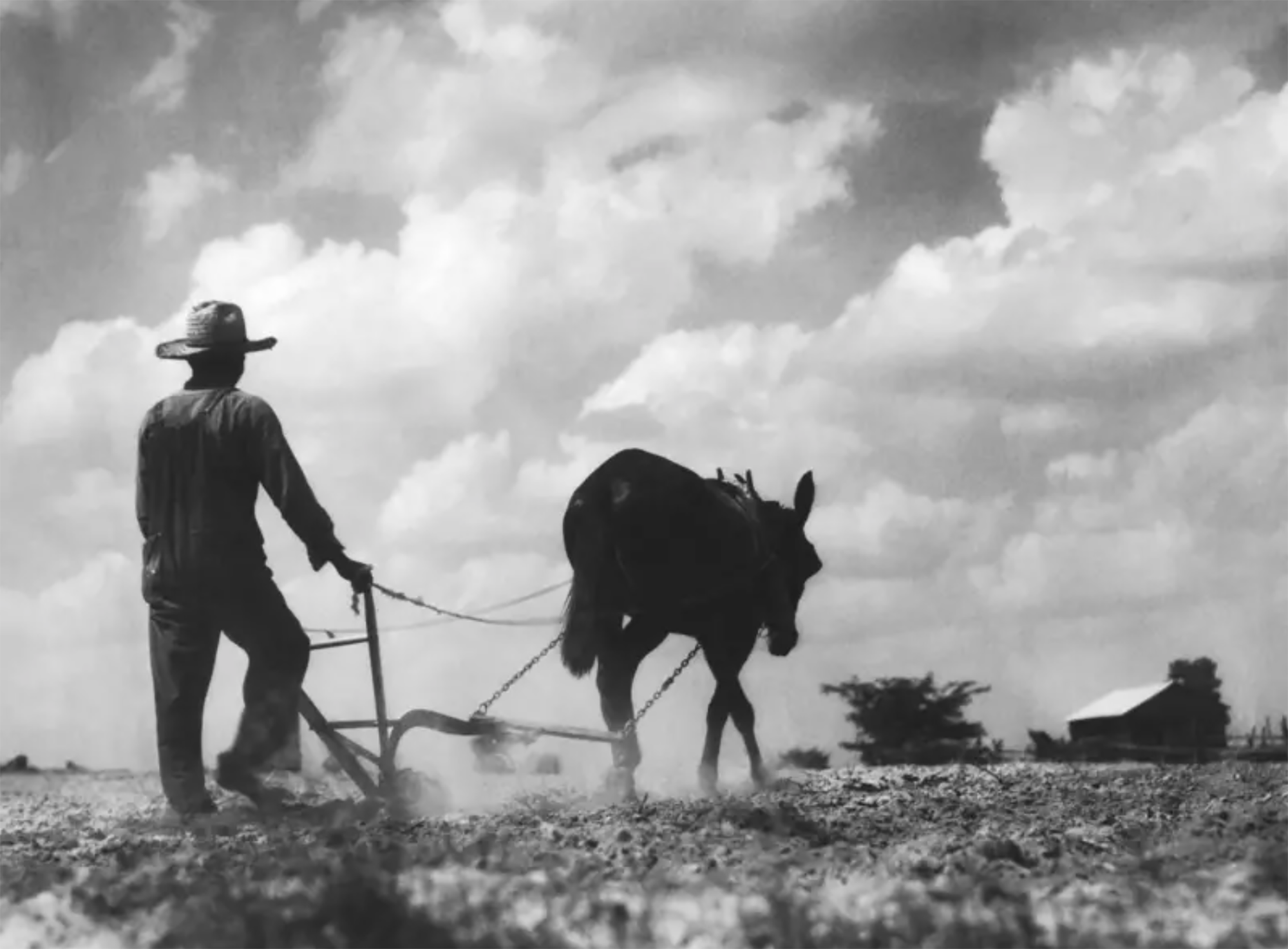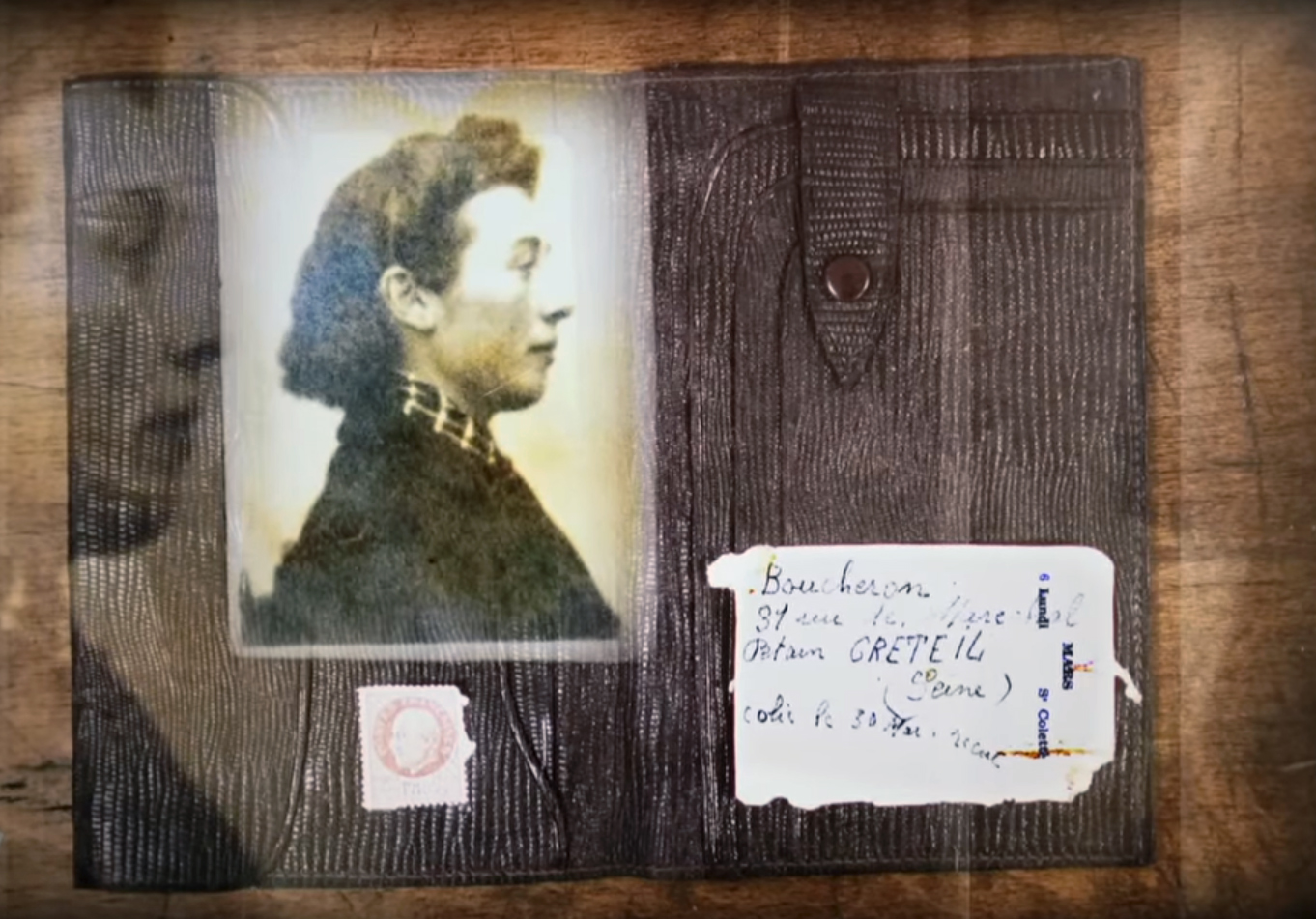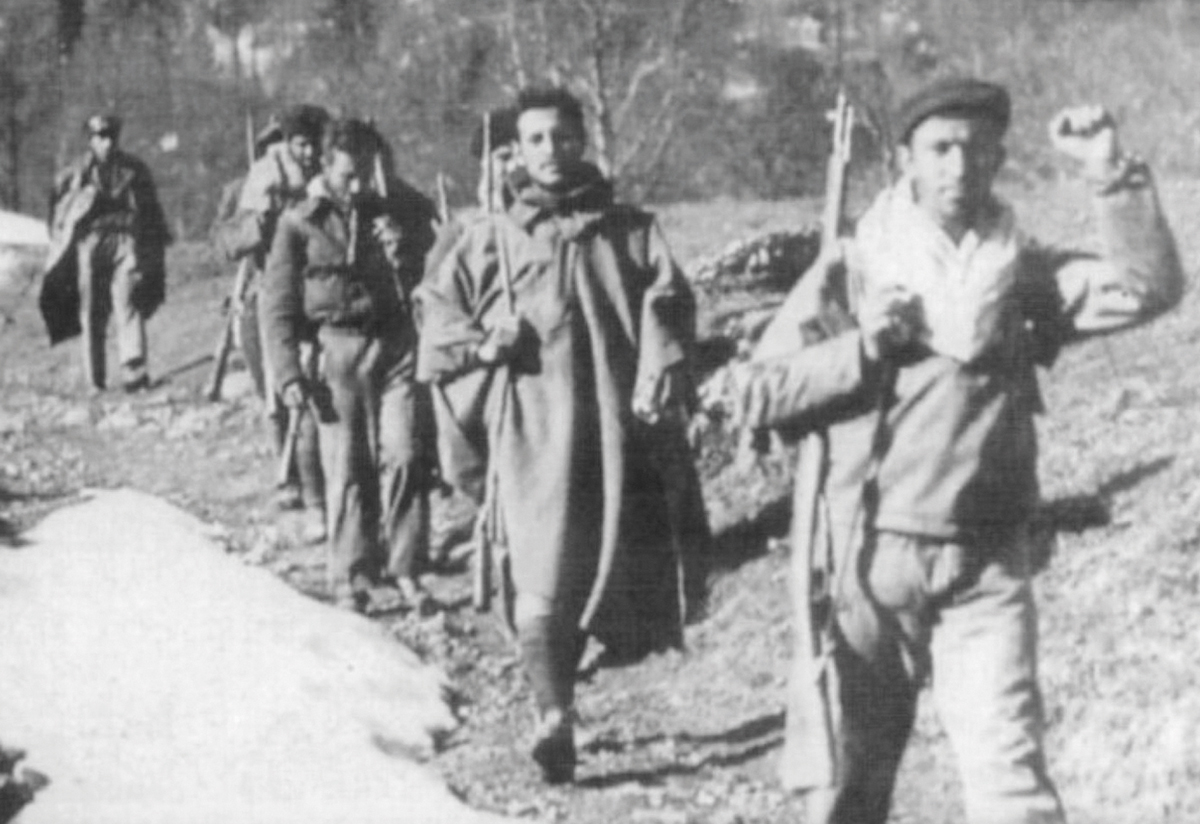Maritxu and Katalina: Because the stories of dissidents sex and gender lost in the files are part of History.
- At the end of the 15th century or the beginning of the 16th century, she was arrested, imprisoned, tortured, stripped of everything and exiled Catherine of Belauntza, for refusing “carnal relations” with Maredi of Oiartzun. We know of this 500 year incognito event and lost in the archives thanks to historians who explore traditional androcentric historiography. Precisely because, although little is mentioned, in the past there were also dissidents gender and gender and systems of values and sanctions aimed at the eradication of these “sinners”. In the Dardarak archive, the Dardarak exhibition and the illustrated book Dardarak tour the streets of Bilbao to pay tribute to these silenced stories and make that Story visible.
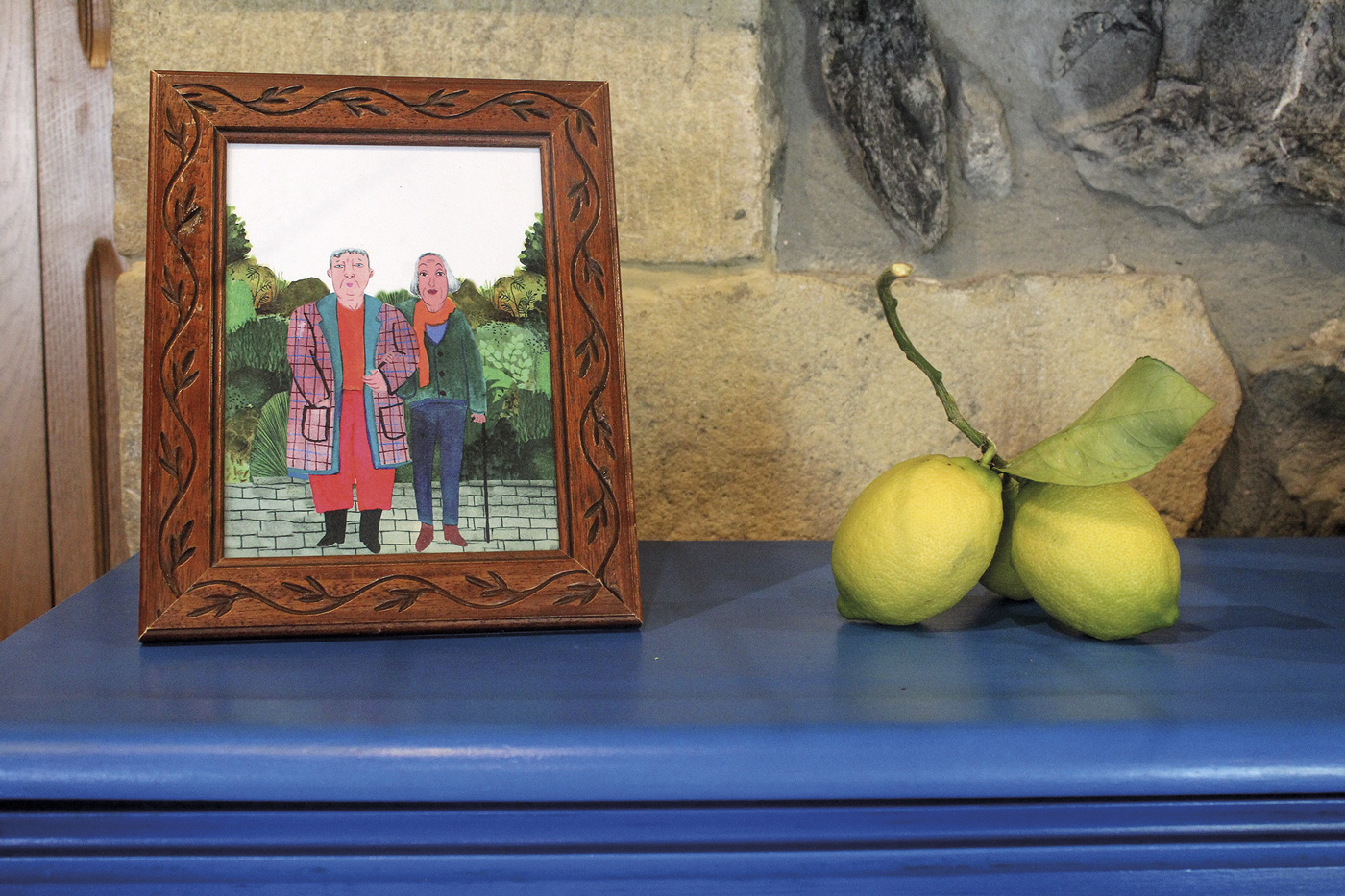
History places some facts in the memory of the community and silence others, always following the vision and desire of the powerful. How many events, looks, contributions and experiences of the past accumulate in the realm of oblivion? There we had, in the ashes, say, the case of Catherine of Belauntza (Gipuzkoa), who was arrested, imprisoned, tortured, expropriated from all her assets and exiled for having maintained an affective sexual relationship with Maredi in Oiartzun (Gipuzkoa).
We are at the end of the 15th century or the beginning of the 16th century, and we know it because the historian Ángel Solorzano brought to light the ruling of the Provincial Court of Castile on July 21, 1503. "They were used as men and women, naked on each other, touching each other, kissing each other, riding on naked vientres... they did the acts of meat that a man should only perform with a woman", it is read in the testimonies that the sentence gives them. The facts were reported by a private individual and the trial was ordered by Miguel de Ochoa Olazabal, mayor of Donostia-San Sebastián. The carnal relations between Catherine and Maritxu apparently had "public fame", that is, that the Donostiarras knew firsthand the sex-affective relationship between them. In sin, and also with courage! The Mayor of Donostia-San Sebastián could not allow such an aggression to occur. Reaffirming that the defendant was false and making it clear that he was "of good fame", Catalina clung to life – even under torture. But he pleaded guilty and all the property was confiscated, he was charged with legal expenses and exiled, under threat: If he came back to Donostia-San Sebastian, "he would be hung in the head square at the back of a rope until he died."
He was not intimidated and appealed to the Court of Chancellery in Valladolid. He calls and wins: he acquitts the judge and forces the mayor of San Sebastian to return "all fame". We know that he returned home, or at least his surroundings, thanks to a document found in the Historical Archive of Elizabarruti in San Sebastián: Catherine of Belauntza died in Tolosa in 1546. On Maritxu in Oiartzun, however, we do not have – for the time being – information.
Symbolic reparation
On 22 November they recalled and honoured the village of Catalina, in the same district of Belauntza. Joana Aurrekoetxea, who has been among the organizers of the festival, has stressed that "we have been very comfortable" gathering the small and remembering the soul of the people. They wanted to do a kind of recognition and gratitude, "to recover a small part of the history of this people and to make a symbolic recognition and reparation both to Catherine and Maritxu, as well as to other dissident sexes and genres".
After a joint repair exercise, Katalina and Maritxu were offered a limonero to settle in the lands of Belauntza. The idea of naming the Plaza de la Villa with the name "Plaza de Catalina y de Maritxu" also emerged from the informal tertulia after the tribute, as the City Council of Belauntza has launched a participatory process to analyze and complete the street's nomenclature. It would be beautiful. That mayor of San Sebastian at the end of the 15th century would put the name of the condemned and threatened with death in the heart of the town 500 years later.
The case of Maritxu and Katalina has become popular thanks to the hegemonic androcentric stories that are emerging. But they are not the only ones: expressions of gender, sexualities, bodies and non-normative relationships have been condemned in the past for being contrary to sexual morality. Solorzano, historian, says that they were "many": More than 500 documents from the Valladolid Chancellery and the Royal Court are related to this fact, 9% of the crimes. It should also be noted that many of the cases were not tried by the courts, but by the street, where the law allowed the community to "avenge itself with a knife" against sodomy.
"We have little information and literature regarding the history of women and dissident sexes/genders, let alone regarding their pleasure. Jesus [Solorzano] says that they are in the archives, but that, due to lack of interest, they are not yet known," explains Aurrekoetxea. Finally, most of the information on these realities is found in court judgments. Although these documents are written from a system of androcentric values, they are of great importance to recover the reality of the dissident sexes and genres of the time.
This recovery exercise was carried out by Aurrekoetxea and Karmele Mitxelena with the exhibition Dardarak in the file. They look at those who wanted to make Western Europe invisible between the Middle Ages and the Renaissance.
"Tremors in the file":
- From January 15 for a month at the Feminist Intercultural Square of Hernani
- March 6-30 at the
Casa de Cultura de Aiete de
Donostia - Etortzeke: Orereta, Durango...
Sodomia crime
At that time, great changes occurred in the view of sexuality: women had to respond to the sexual desires of men, especially to fulfill the reproductive function – and, evidently, guided by religion, following the mandate of God. This function encompassed everything else under the term "sodomy", which consisted of "vision against nature", "sin" and "crime". Female sodomy was considered an increasingly serious crime between the 11th and 13th centuries, and the use of the rebels, the procrastinations of the time, was considered a great sin. The Catholic Monarchs of Spain imposed in 1497 the law to punish sodomy more harshly, claiming it was "unnatural".
They had to be punished until their disappearance – with long prison terms, motivated by exile and death – because they were thought to be causing risks and natural disasters to the social order. In the center of the public square, several people were burned for refusing to maintain forbidden relationships. Tremors in the file bring to light some of them: In 1489, in the center of the Plaza de San Francisco de Sevilla, Marina de Ávila and Catalina de Baena were hanged "as men for sleeping with women"; in 1477, Katherina Hetzeldorfer de Sevilla was drowned in the Rhin River by embodying the masculine roles; and the case of Céspedes is brought to the legend in the light in the 15. Although the hegemonic history does not mention it, whether it is or not, these horrors are present, they are part of history.
Responsibility to prevent anachronism
The exercise was not necessarily easy for Aurrekoetxea and Mitxelena, and not because she was not necessarily a historian: in addition to the difficulties to clear the gaps in the history of an androcentric value system, they were also responsible for not doing anachronistic readings. "We have worked on the issues with respect, taking into account historical otherness, to avoid anachronism. This requires leaving aside the ideas of the current concepts of lesbianism, of gender identities, as well as the way of understanding bodies and affections today".
Pulling this responsibility can be read in the exhibition: "As we do not know the quality of the affective and erotic manifestations of the time, an exhaustive study of homoerotism becomes difficult (the usual term of historians to call lesbianism). As a consequence, in many cases, lesbian relations have been silenced and discarded, and in other cases, have been distorted or invented". The same observation can be made in terms of gender and sex. You see names and surnames and sex, and you identify them as "two women," and you see them as lesbians. However, we do not know how they experienced gender, to what extent and why they acquired attitudes linked to male identity. The following note was published in the statement: "It is impossible to know what prompted the appropriation of masculinity to a body read as a woman in each particular case, but from the Middle Ages female transvestites or gender transitions are considered historical phenomena of importance, with many implications of open interpretation: surviving to get rid of compulsory marriage, to be able to carry out activities characteristic of the world of men (studies, profession, to have a public space), to transition rules of rigid gender.
Knowing that times have different readings, Judith M proposed the lesbian–like concept. The historians Bennett in 1998: at a time when the word lesbian is not used, lesbian-like is defined, for leading life independently and out of gender and sex roles, with social attitudes and experiences oriented separately from the relationships of domination of men, including marriage.
Lemon: In the Belauntza, in the exhibition and in the book Dardarak
The viewer will find a lemon tree in the Vibrations file in space, and it's no coincidence. Precisely because the exhibition is part of the exercise of memory and recognition of the history of Catherine and Maritxu. Pulling away from that goal, Dardara (Txalaparta) also has an illustrated children's album, illustrated by Irene Irureta and composed by Aurrekoetxea and Mitxelena. The protagonist is Maritxu and Katalina, two elderly women of the twenty-first century who live together, love each other and are a house for each other. The tremors occurred within the framework of the Ku-ku Eguna, a day organized in Oiartzun, dedicated to the literature of children and youth that reflects sexual and gender dissent. Time and time again, the book makes Oiartzun and Belauntza, of the same name, windy. "Dardara's story is a modern story, which has bridges with the past, with history. Fiction, history and current reality is a mixture of three," says Aurrekoetxea. In this project, lemons have also been put on the skin.
Rudolf Botha hizkuntzalari hegoafrikarrak hipotesi bat bota berri du Homo erectus-i buruz: espezieak ahozko komunikazio moduren bat garatu zuen duela milioi bat urte baino gehiago. Homo sapiens-a da, dakigunez, hitz egiteko gai den espezie bakarra eta, beraz, hortik... [+]
Böblingen, Holy Roman Empire, 12 May 1525. Georg Truchsess von Waldburg overthrew the Württemberg insurgent peasants. Three days later, on 15 May, Philip of Hesse and the Duke of Saxony joined forces to crush the Thuringian rebels in Frankenhausen, killing some 5,000 peasants... [+]
During the renovation of a sports field in the Simmering district of Vienna, a mass grave with 150 bodies was discovered in October 2024. They conclude that they were Roman legionnaires and A.D. They died around 100 years ago. Or rather, they were killed.
The bodies were buried... [+]
Washington, D.C., June 17, 1930. The U.S. Congress passed the Tariff Act. It is also known as the Smoot-Hawley Act because it was promoted by Senator Reed Smoot and Representative Willis Hawley.
The law raised import tax limits for about 900 products by 40% to 60% in order to... [+]
My mother always says: “I never understood why World War I happened. It doesn't make any sense to him. He does not understand why the old European powers were involved in such barbarism and does not get into his head how they were persuaded to kill these young men from Europe,... [+]
Until now we have believed that those in charge of copying books during the Middle Ages and before the printing press was opened were men, specifically monks of monasteries.
But a group of researchers from the University of Bergen, Norway, concludes that women also worked as... [+]











